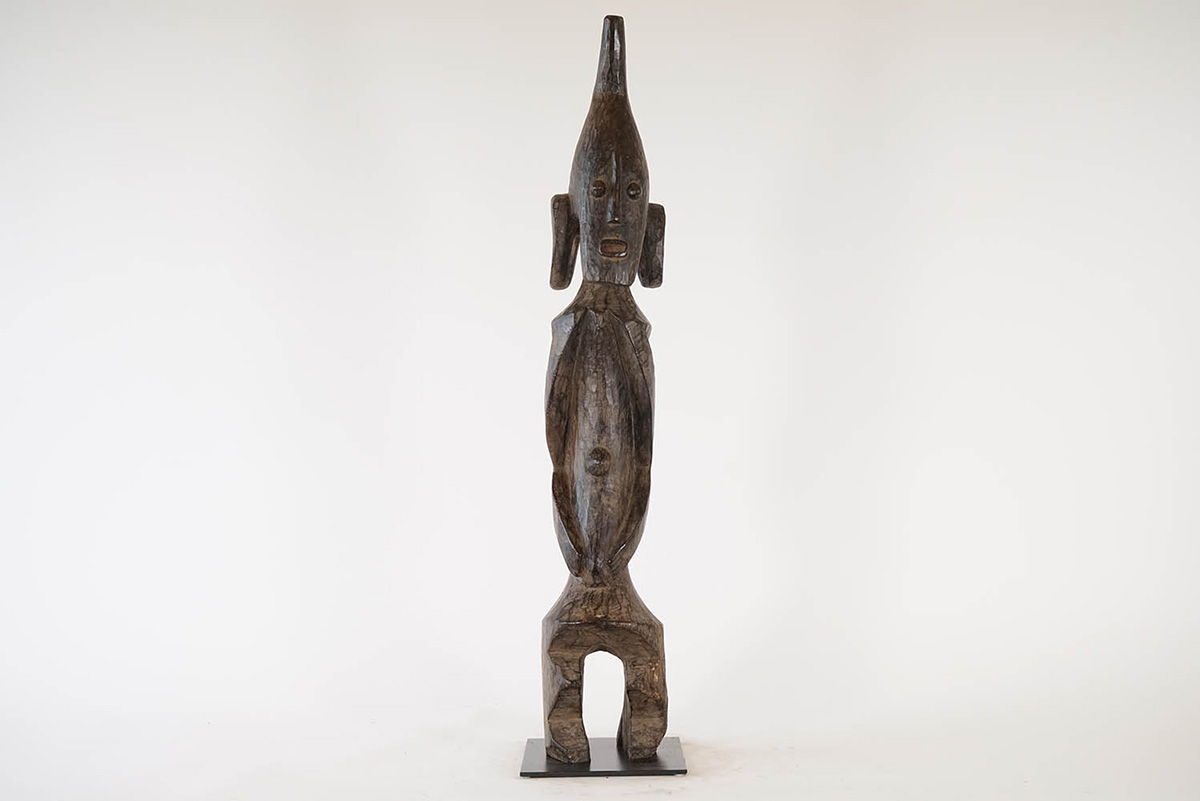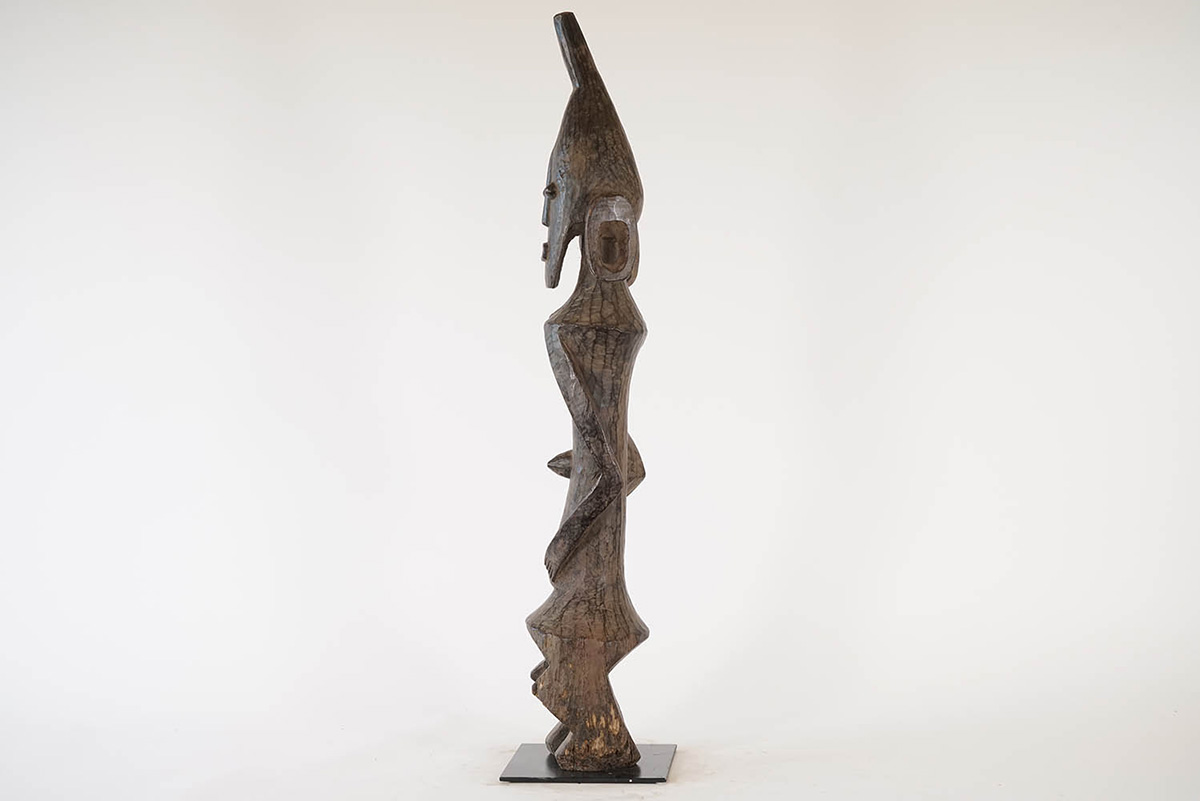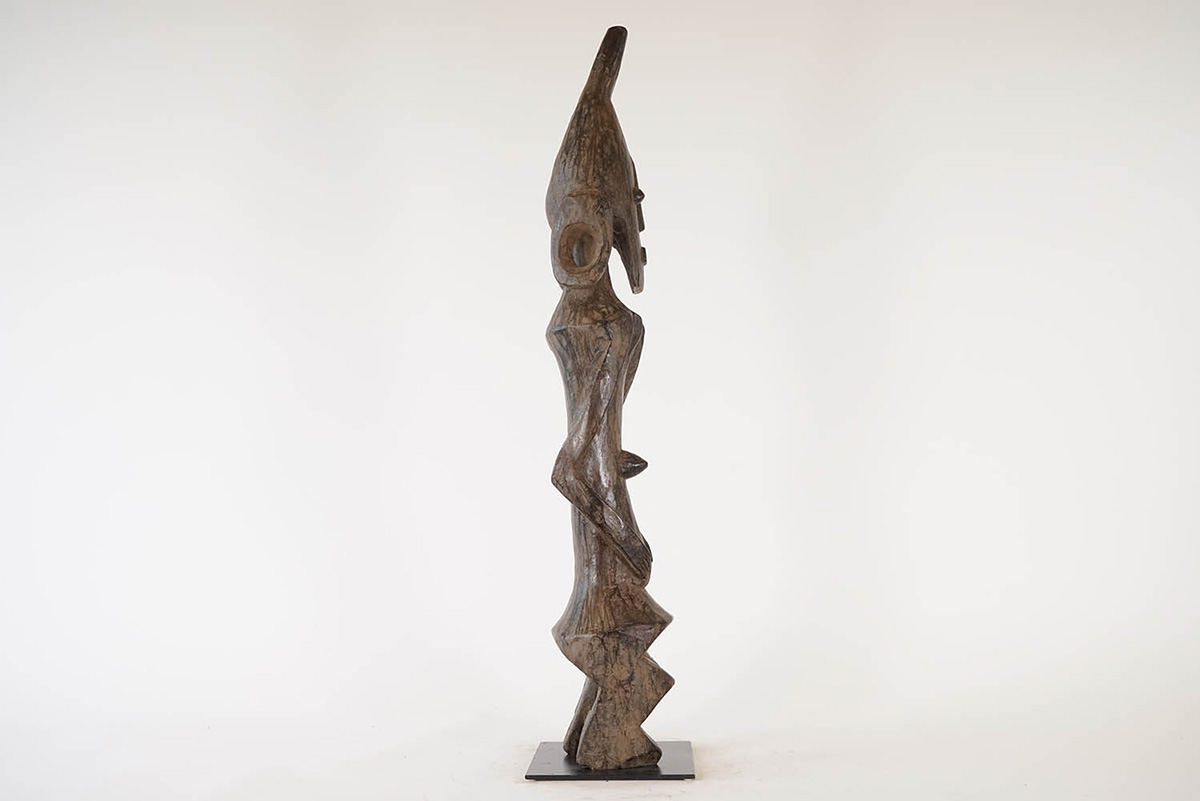We are not exactly sure as to the origins of this piece but believe it has features of the Jukun people or the Mumuye people of Nigeria. It measures 32.5 inches tall including base and weighs 10.5 pounds. There is some cracking to the neck and back of the legs and wear and tear throughout – please inspect photos.
Jukun / Mumuye Style Statue 32.5″ – Nigeria – African Art
$450.00
Sold

| Type of Object | Figure, statue |
|---|---|
| Country of Origin | Nigeria |
| Ethnicity | Jukun, Mumuye |
| Material | Wood, Pigment |
| Approximate Age | Unknown |
| Height (Inches) | 32.5" |
| Width (Inches) | 7" |
| Depth (Inches) | 7" |
| Weight (Pounds) | 10.5 lbs |
| Overall Condition | Some cracking on neck and back of neck. Wear and tear throughout. |
You must be logged in to post a review.
Tribe Information
About the Jukun People
"The area lying to the north of the Niger and Benue Rivers includes a range of mountains covered by a Savannah. Archaeological excavations have revealed traces of human activity on the Jos plateau and tin the Benue River valley dating from the Stone Age - 39,000 years ago.
Over time, the indigenous Beue-kongo and Adamawa-speaking people of this area were infiltrated by Chad-speaking tribes who migrated from the east and north. this created a mosaic of people with different social and religious traditions. Nevertheless, common artistic conventions can be found among the majority of the people who live in this area. For example, shoulder masks are worn by the Mumuye, the Jukun and Waja people and red seeds are often applied on the surface of headdresses and masks.
Tribes such as the Mumuye, the Chamba, the Jukun, the Wurkun, the Geomai and the Montol live along the Benue River in eastern Nigeria, while the Waja, the Mama, the Hausa, the Koro and the Dakakari people settled in the northern part of the country.
The king of the Jukun, known as the Aka Uku, lives in the town of Wukari from where he rules his 30,000 people. he leads the cult of the ancestors who are in turn responsible for the welfare of the tribe.
Statues are found predominantly among the Jukun people in the north west and represent ancestors, as well as wives and slaves. They are displayed during funerals, agricultural ceremonies and in times of danger. During these rites, the figures serve as an intermediary between the priest and the ancestor's world. In the south-western part of the Jukun territory, the role of intermediary is held by male dancers who wear shoulder masks that have a round head, a flattened face and a smooth coiffure."
Source:
Baquart, Jean-Baptiste. The Tribal Arts of Africa. New York: Thames and Hudson Inc. 1998. Print.
About the Mumuye People
“Living on the left bank of the Benue River, the 400,000 Mumuye people intensively farm an area of plains. Socially, they are divided into small family groups called Dola, which are headed by a council of elders with an elected leader. The Vabong secret society, of which there are seven grades, regulates Mumuye religious life. Entry into the society is achieved through initiation ceremonies, which include flagellation and an explanation of the meaning of masks and other magical objects.”
Source:
Baquart, Jean-Baptiste. The Tribal Arts of Africa. New York: Thames and Hudson Inc. 1998. Print.







Reviews
There are no reviews yet.